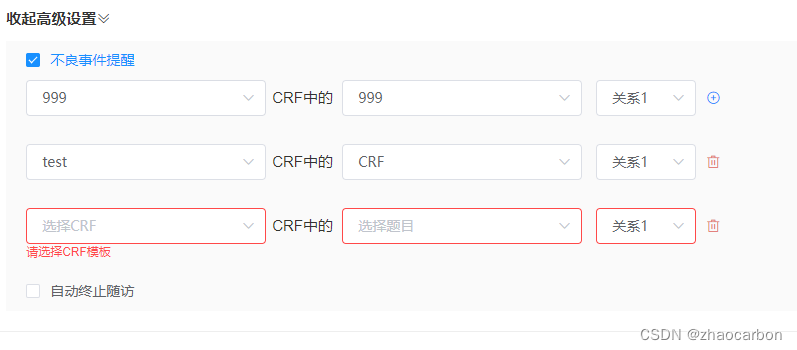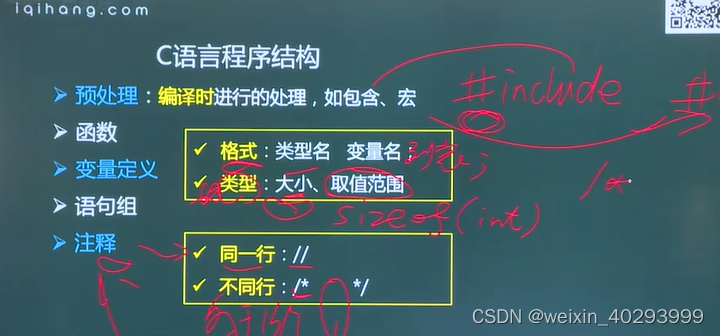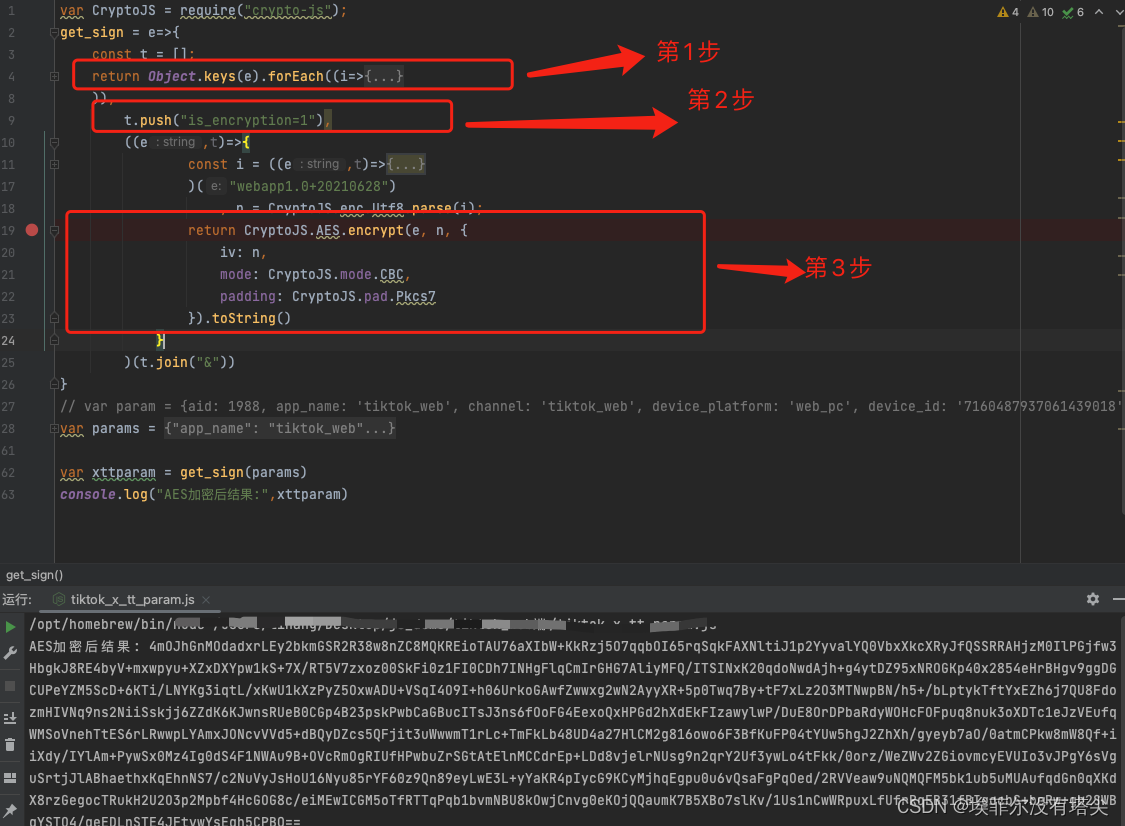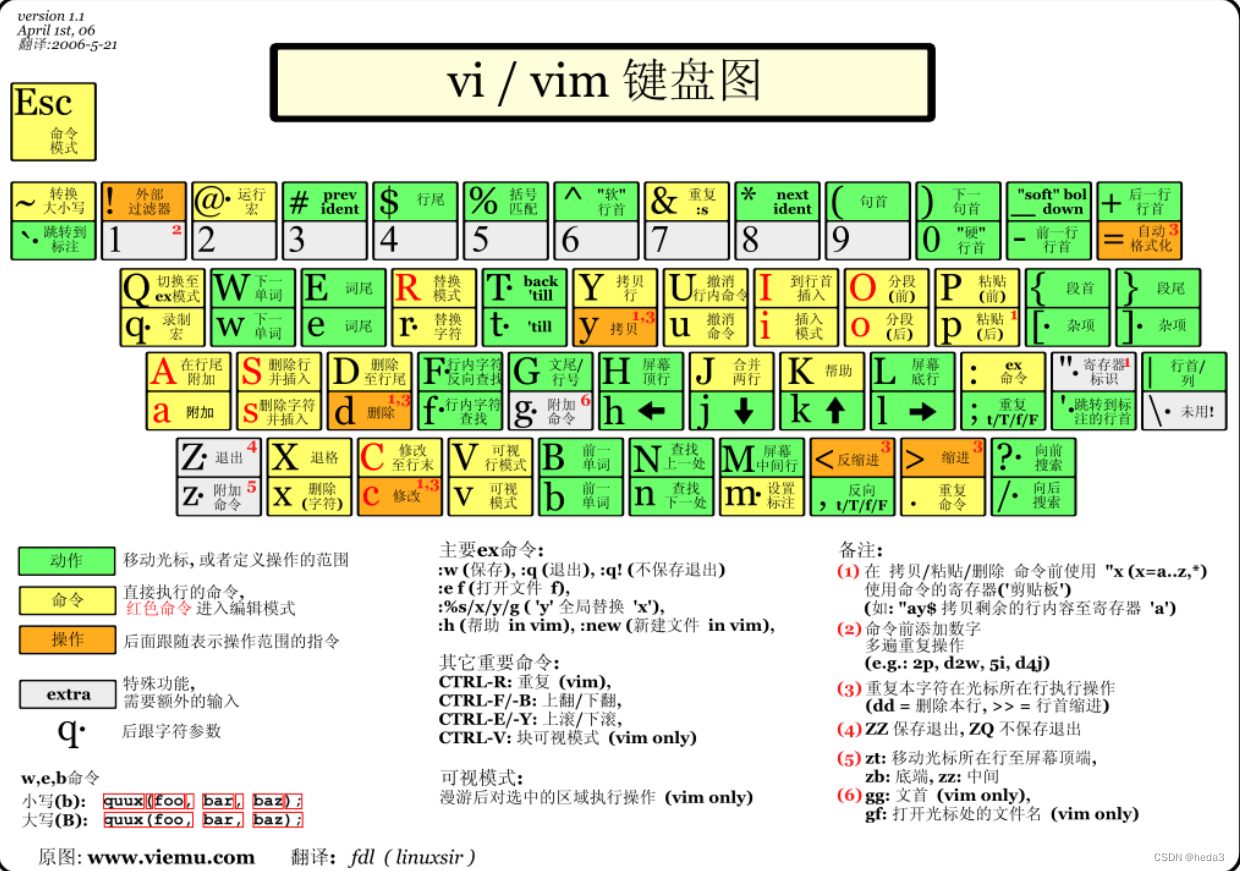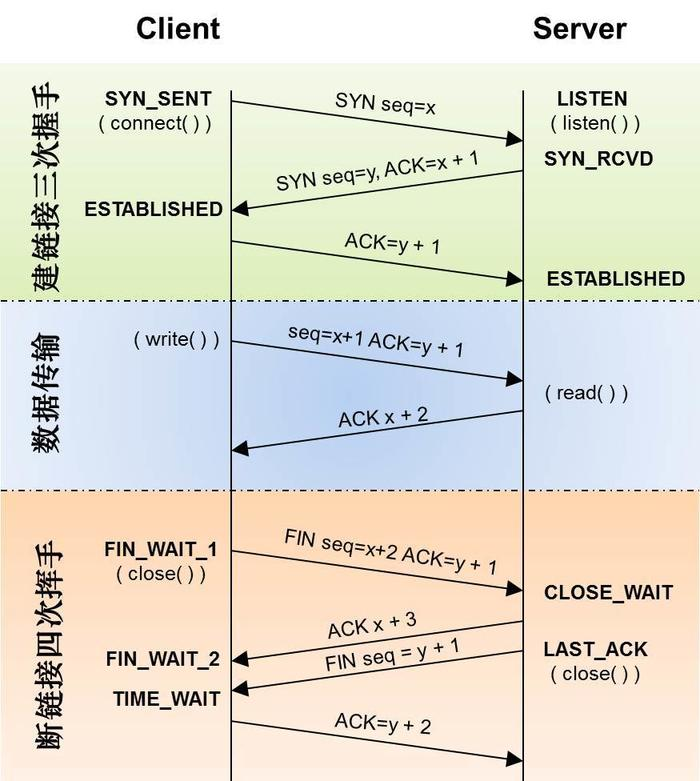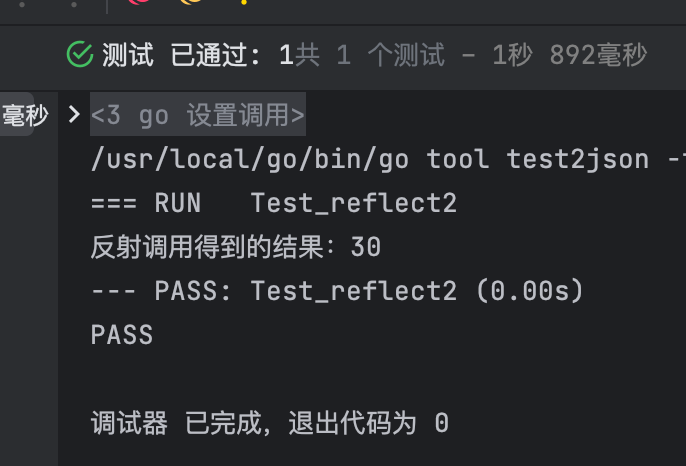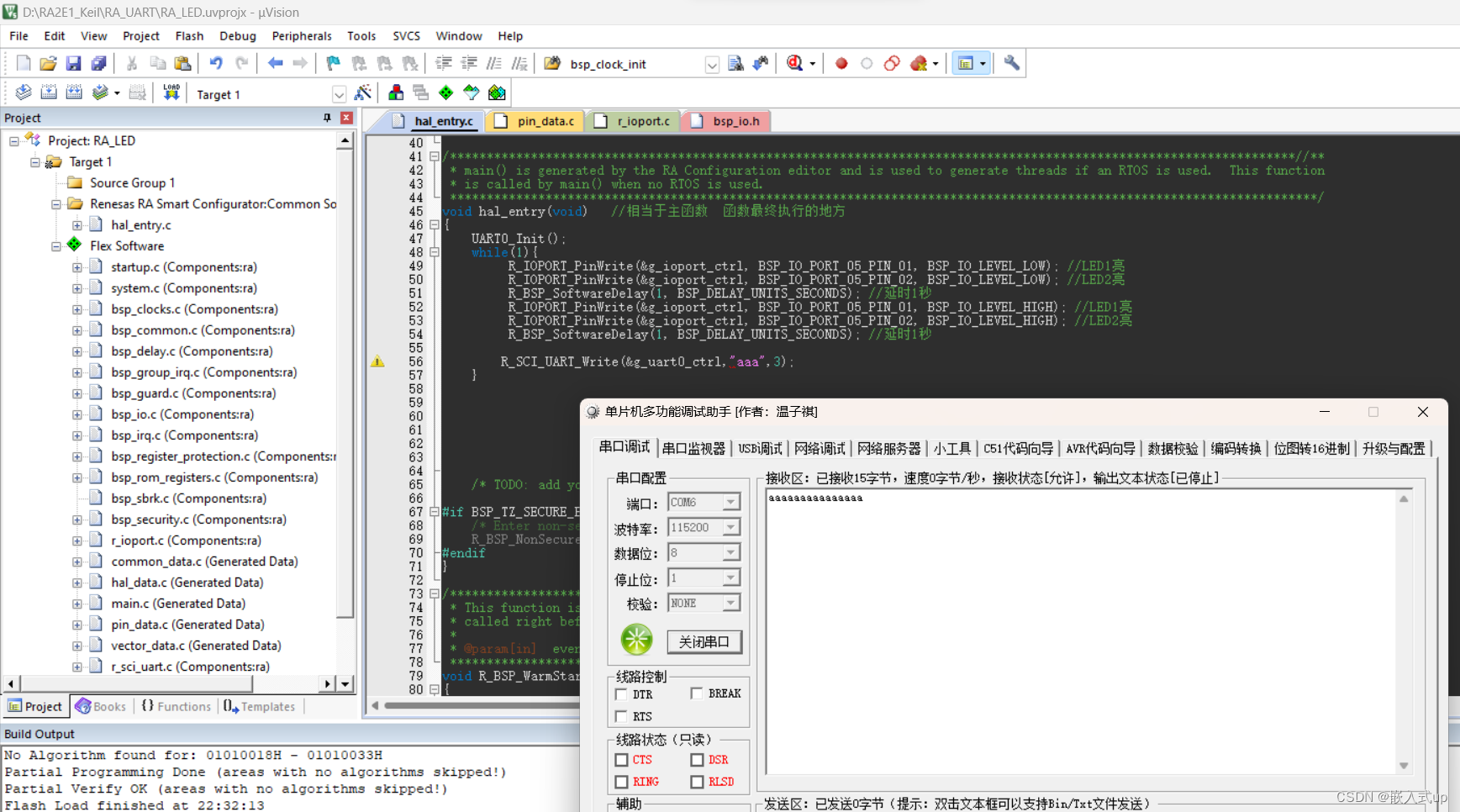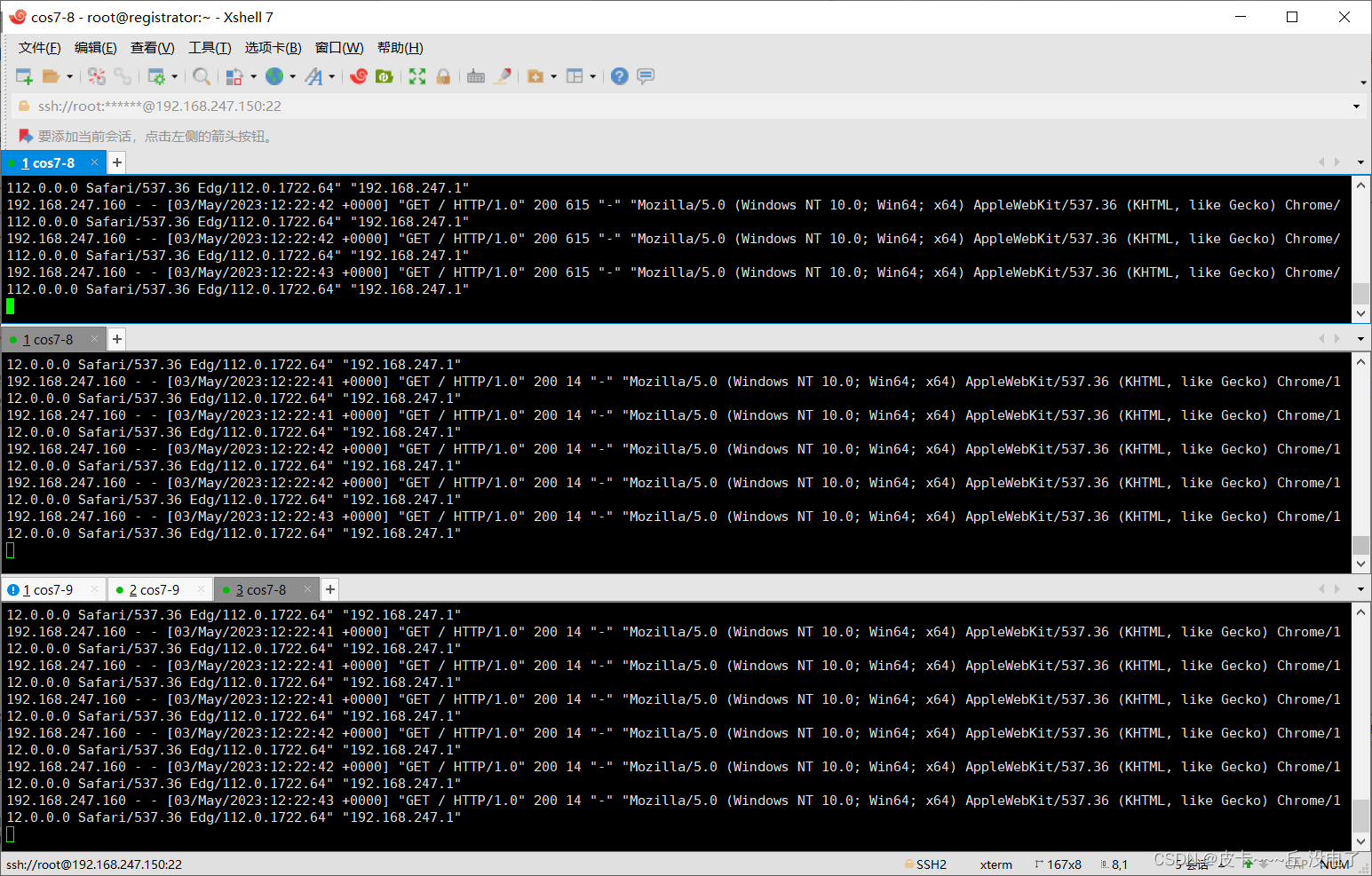文章目录
- 1 阻塞和非阻塞 IO
- 1.1 阻塞和非阻塞简介
- 1.2 等待队列
- 1、等待队列头
- 2、等待队列项
- 3、将队列项添加/移除等待队列头
- 4、等待唤醒
- 5、等待事件
- 1.3 Linux驱动下的poll操作函数
- 2 阻塞 IO 实验
- 1、驱动程序编写
- 2、编写测试 APP
- 3、编译驱动程序和测试 APP
- 4、运行测试
- 3 阻塞 IO 实验
- 1、驱动程序编写
- 2、编写测试 APP
- 3、编译驱动程序和测试 APP
- 4、运行测试
1 阻塞和非阻塞 IO
1.1 阻塞和非阻塞简介
-
当应用程序对设备驱动进行操作的时候,如果不能获取到设备资源,那么阻塞式 IO 就会将应用程序对应的线程挂起,直到设备资源可以获取为止。
-
非阻塞 IO,应用程序对应的线程不会挂起,它要么一直轮询等待,直到设备资源可以使用,要么就直接放弃。
阻塞 IO 访问示意图,应用程序调用 read 函数从设备中读取数据,当设备不可用或数据未准备好的时候就会进入到休眠态。等设备可用的时候就会从休眠态唤醒,然后从设备中读取数据返回给应用程序。
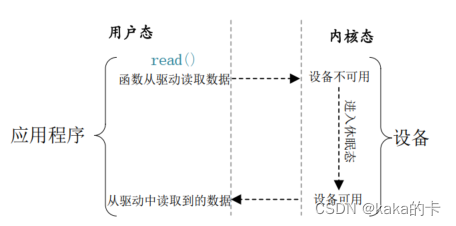
非阻塞 IO 访问示意图,应用程序使用非阻塞访问方式从设备读取数据,当设备不可用或数据未准备好的时候会立即向内核返回一个错误码,表示数据读取失败。应用程序会再次重新读取数据,这样一直往复循环,直到数据读取成功。
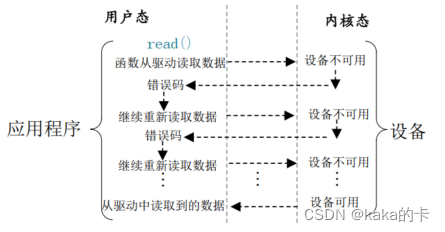
应用程序可以使用如下所示示例代码来实现阻塞访问:
int fd;
int data = 0;
fd = open("/dev/xxx_dev", O_RDWR); /* 阻塞方式打开 */
ret = read(fd, &data, sizeof(data)); /* 读取数据 */
应用程序要采用非阻塞的方式来访问驱动设备文件:
int fd;
int data = 0;
fd = open("/dev/xxx_dev", O_RDWR | O_NONBLOCK); /* 非阻塞方式打开 */
ret = read(fd, &data, sizeof(data)); /* 读取数据 */
1.2 等待队列
1、等待队列头
阻塞访问最大的好处就是当设备文件不可操作的时候进程可以进入休眠态,这样可以将CPU 资源让出来。
Linux 内核提供了等待队列(wait queue)来实现阻塞进程的唤醒工作,在驱动中使用等待队列,必须创建并初始化一个等待队列头,等待队列头使用结构体wait_queue_head_t 表示, wait_queue_head_t 结构体定义在文件 include/linux/wait.h 中,结构体内容如下所示:
struct __wait_queue_head {
spinlock_t lock;
struct list_head task_list;
};
typedef struct __wait_queue_head wait_queue_head_t;
- 定义好等待队列头以后需要初始化, 使用 init_waitqueue_head 函数初始化等待队列头,函数原型如下:
void init_waitqueue_head(wait_queue_head_t *q)
参数 q 就是要初始化的等待队列头。
也可以使用宏 DECLARE_WAIT_QUEUE_HEAD 来一次性完成等待队列头的定义的初始化。
2、等待队列项
等待队列头就是一个等待队列的头部,每个访问设备的进程都是一个队列项,**当设备不可用的时候就要将这些进程对应的等待队列项添加到等待队列里面。**结构体 wait_queue_t 表示等待队列项,结构体内容如下:
struct __wait_queue {
unsigned int flags;
void *private;
wait_queue_func_t func;
struct list_head task_list;
};
typedef struct __wait_queue wait_queue_t;
使用宏 DECLARE_WAITQUEUE 定义并初始化一个等待队列项,宏的内容如下:
DECLARE_WAITQUEUE(name, tsk)
name 就是等待队列项的名字,
tsk 表示这个等待队列项属于哪个任务(进程),一般设置为current,在Linux内核中current相当于一个全局变量,表示当前进程。因此宏DECLARE_WAITQUEUE 就是给当前正在运行的进程创建并初始化了一个等待队列项。
3、将队列项添加/移除等待队列头
当设备不可访问的时候就需要将进程对应的等待队列项添加到前面创建的等待队列头中,只有添加到等待队列头中以后进程才能进入休眠态。当设备可以访问以后再将进程对应的等待队列项从等待队列头中移除即可,等待队列项添加 API 函数如下:
void add_wait_queue(wait_queue_head_t *q,
wait_queue_t *wait)
函数参数和返回值含义如下:
q: 等待队列项要加入的等待队列头。
wait:要加入的等待队列项。
返回值:无。
等待队列项移除 API 函数如下:
void remove_wait_queue(wait_queue_head_t *q,
wait_queue_t *wait)
函数参数和返回值含义如下:
q: 要删除的等待队列项所处的等待队列头。
wait:要删除的等待队列项。
返回值:无
4、等待唤醒
当设备可以使用的时候就要唤醒进入休眠态的进程,唤醒可以使用如下两个函数:
void wake_up(wait_queue_head_t *q)
void wake_up_interruptible(wait_queue_head_t *q)
参数 q 就是要唤醒的等待队列头,这两个函数会将这个等待队列头中的所有进程都唤醒。
wake_up 函数可以唤醒处于 TASK_INTERRUPTIBLE 和 TASK_UNINTERRUPTIBLE 状态的进程
wake_up_interruptible 函数只能唤醒处于 TASK_INTERRUPTIBLE 状态的进程。
5、等待事件
除了主动唤醒以外,也可以设置等待队列等待某个事件,当这个事件满足以后就自动唤醒等待队列中的进程,和等待事件有关的 API 函数
| 函数 | 描述 |
|---|---|
| wait_event(wq, condition) | 等待以 wq 为等待队列头的等待队列被唤醒,前 提是 condition 条件必须满足(为真),否则一直阻 塞 。 此 函 数 会 将 进 程 设 置 为 TASK_UNINTERRUPTIBLE 状态 |
| wait_event_timeout(wq, condition, timeout) | 功能和 wait_event 类似,但是此函数可以添加超 时时间,以 jiffies 为单位。此函数有返回值,如果返回 0 的话表示超时时间到,而且 condition 为假。为 1 的话表示 condition 为真,也就是条 件满足了 |
| wait_event_interruptible(wq, condition) | 与 wait_event 函数类似,但是此函数将进程设置 为 TASK_INTERRUPTIBLE,就是可以被信号打 断。 |
| wait_event_interruptible_timeout(wq, condition, timeout) | 与 wait_event_timeout 函数类似,此函数也将进 程设置为 TASK_INTERRUPTIBLE,可以被信号 打断。 |
1.3 Linux驱动下的poll操作函数
当应用程序调用 select 或 poll 函数来对驱动程序进行非阻塞访问的时候,驱动程序file_operations 操作集中的 poll 函数就会执行。
poll 函数原型如下所示:
unsigned int (*poll) (struct file *filp, struct poll_table_struct *wait)
函数参数和返回值含义如下:
filp: 要打开的设备文件(文件描述符)。
wait: 结构体 poll_table_struct 类型指针, 由应用程序传递进来的。一般将此参数传递给poll_wait 函数。
返回值:向应用程序返回设备或者资源状态,可以返回的资源状态如下:
POLLIN 有数据可以读取。
POLLPRI 有紧急的数据需要读取。
POLLOUT 可以写数据。
POLLERR 指定的文件描述符发生错误。
POLLHUP 指定的文件描述符挂起。
POLLNVAL 无效的请求。
POLLRDNORM 等同于 POLLIN,普通数据可读
在驱动程序的 poll 函数中调用 poll_wait 函数, poll_wait 函数不会引起阻塞,只是将应用程序添加到 poll_table 中, poll_wait 函数原型如下:
void poll_wait(struct file * filp, wait_queue_head_t * wait_address, poll_table *p)
参数 wait_address 是要添加到 poll_table 中的等待队列头
参数 p 就是 poll_table,就是file_operations 中 poll 函数的 wait 参数。
2 阻塞 IO 实验
1、驱动程序编写
#include <linux/module.h>
#include <linux/kernel.h>
#include <linux/init.h>
#include <linux/fs.h>
#include <linux/slab.h>
#include <linux/uaccess.h>
#include <linux/io.h>
#include <linux/cdev.h>
#include <linux/device.h>
#include <linux/of.h>
#include <linux/of_address.h>
#include <linux/of_irq.h>
#include <linux/gpio.h>
#include <linux/of_gpio.h>
#include <linux/string.h>
#include <linux/irq.h>
#include <asm/mach/map.h>
#include <asm/uaccess.h>
#include <asm/io.h>
#include <linux/interrupt.h>
#include <linux/wait.h>
#include <linux/ide.h>
#define IMX6UIRQ_CNT 1
#define IMX6UIRQ_NAME "blockio"
#define KEY_NUM 1
#define KEY0VALUE 0X01
#define INVAKEY 0XFF
/* key结构体 */
struct irq_keydesc{
int gpio; /* io编号 */
int irqnum; /* 中断号 */
unsigned char value; /* 键值 */
char name[10]; /* 名字 */
irqreturn_t (*handler) (int, void *); /* 中断处理函数 */
};
/* imx6uirq设备结构体 */
struct imx6uirq_dev{
dev_t devid;
int major;
int minor;
struct cdev cdev;
struct class *class;
struct device *device;
struct device_node *nd;
struct irq_keydesc irqkey[KEY_NUM];
struct timer_list timer;
atomic_t keyvalue;
atomic_t releasekey;
wait_queue_head_t r_wait; /* 读等待队列头 */
};
struct imx6uirq_dev imx6uirq; /* irq设备 */
static int imx6uirq_open(struct inode *inode, struct file *filp)
{
filp->private_data = &imx6uirq;
return 0;
}
static ssize_t imx6uirq_read(struct file *filp, char __user *buf, size_t cnt, loff_t *offt)
{
int ret = 0;
unsigned char keyvalue;
unsigned char releasekey;
struct imx6uirq_dev *dev = filp->private_data;
#if 0
/* 等待事件 */
wait_event_interruptible(dev->r_wait, atomic_read(&dev->releasekey)); /* 等待按键有效 */
#endif
#if 0
DECLARE_WAITQUEUE(wait, current); /* 定义一个等待队列项 */
if(atomic_read(&dev->releasekey) == 0) { /* 按键没按下 */
add_wait_queue(&dev->r_wait, &wait); /* 将队列项添加到等待队列头 */
__set_current_state(TASK_INTERRUPTIBLE); /* 当前进程设置为可被打断的状态 */
schedule(); /* 切换 */
/* 唤醒以后从这里运行 */
if (signal_pending(current)) {
ret = -ERESTARTSYS;
goto data_error;
}
__set_current_state(TASK_RUNNING); /* 将当前任务设置为运行状态 */
remove_wait_queue(&dev->r_wait, &wait); /* 将对应的队列项从等待队列头删除 */
}
#endif
DECLARE_WAITQUEUE(wait, current); /* 定义一个等待队列项 */
add_wait_queue(&dev->r_wait, &wait); /* 将队列项添加到等待队列头 */
__set_current_state(TASK_INTERRUPTIBLE); /* 当前进程设置为可被打断的状态 */
schedule(); /* 切换 */
/* 唤醒以后从这里运行 */
if (signal_pending(current)) {
ret = -ERESTARTSYS;
goto data_error;
}
keyvalue = atomic_read(&dev->keyvalue);
releasekey = atomic_read(&dev->releasekey);
if(releasekey) { /* 有效按键 */
if(keyvalue & 0x80) {
keyvalue &= ~0x80;
ret = copy_to_user(buf, &keyvalue, sizeof(keyvalue));
} else {
goto data_error;
}
atomic_set(&dev->releasekey, 0); /* 按下标志清零 */
} else {
goto data_error;
}
data_error:
__set_current_state(TASK_RUNNING); /* 将当前任务设置为运行状态 */
remove_wait_queue(&dev->r_wait, &wait); /* 将对应的队列项从等待队列头删除 */
return ret;
}
/* 操作集 */
static const struct file_operations imx6uirq_fops = {
.owner = THIS_MODULE,
.open = imx6uirq_open,
.read = imx6uirq_read,
};
/* 按键中断处理函数 */
static irqreturn_t key0_handler(int irq, void *dev_id)
{
struct imx6uirq_dev *dev = dev_id;
dev->timer.data = (volatile long)dev_id;
mod_timer(&dev->timer, jiffies + msecs_to_jiffies(20)); /* 20ms定时 */
return IRQ_HANDLED;
}
/* 定时器处理函数 */
static void timer_func(unsigned long arg) {
int value = 0;
struct imx6uirq_dev *dev = (struct imx6uirq_dev*)arg;
value = gpio_get_value(dev->irqkey[0].gpio);
if(value == 0) { /* 按下 */
atomic_set(&dev->keyvalue, dev->irqkey[0].value);
} else if(value == 1) { /* 释放 */
atomic_set(&dev->keyvalue, 0X80 | (dev->irqkey[0].value));
atomic_set(&dev->releasekey, 1); /* 完成的按键过程 */
}
/* 唤醒进程 */
if(atomic_read(&dev->releasekey)) {
wake_up(&dev->r_wait);
}
}
/* 按键初始化 */
static int keyio_init(struct imx6uirq_dev *dev)
{
int ret = 0;
int i = 0;
/* 1,按键初始化 */
dev->nd = of_find_node_by_path("/key");
if(dev->nd == NULL) {
ret = -EINVAL;
goto fail_nd;
}
for(i = 0; i < KEY_NUM; i++) {
dev->irqkey[i].gpio = of_get_named_gpio(dev->nd, "key-gpio", i);
}
for(i = 0; i < KEY_NUM; i++) {
memset(dev->irqkey[i].name, 0, sizeof(dev->irqkey[i].name));
sprintf(dev->irqkey[i].name, "KEY%d", i);
gpio_request(dev->irqkey[i].gpio, dev->irqkey[i].name);
gpio_direction_input(dev->irqkey[i].gpio);
dev->irqkey[i].irqnum = gpio_to_irq(dev->irqkey[i].gpio); /* 获取中断号 */
#if 0
dev->irqkey[i].irqnum = irq_of_parse_and_map(dev->nd, i);
#endif
}
dev->irqkey[0].handler = key0_handler;
dev->irqkey[0].value = KEY0VALUE;
/* 2,按键中断初始化 */
for(i = 0; i < KEY_NUM; i++) {
ret = request_irq(dev->irqkey[i].irqnum, dev->irqkey[i].handler,
IRQF_TRIGGER_RISING|IRQF_TRIGGER_FALLING,
dev->irqkey[i].name, &imx6uirq);
if(ret) {
printk("irq %d request failed!\r\n", dev->irqkey[i].irqnum);
goto fail_irq;
}
}
/* 3、初始化定时器 */
init_timer(&imx6uirq.timer);
imx6uirq.timer.function = timer_func;
return 0;
fail_irq:
for(i = 0; i < KEY_NUM; i++) {
gpio_free(dev->irqkey[i].gpio);
}
fail_nd:
return ret;
}
/* 驱动入口函数 */
static int __init imx6uirq_init(void)
{
int ret = 0;
/* 注册字符设备驱动 */
imx6uirq.major = 0;
if(imx6uirq.major) { /* 给定主设备号 */
imx6uirq.devid = MKDEV(imx6uirq.major, 0);
ret = register_chrdev_region(imx6uirq.devid, IMX6UIRQ_CNT, IMX6UIRQ_NAME);
} else { /* 没给定设备号 */
ret = alloc_chrdev_region(&imx6uirq.devid, 0, IMX6UIRQ_CNT, IMX6UIRQ_NAME);
imx6uirq.major = MAJOR(imx6uirq.devid);
imx6uirq.minor = MINOR(imx6uirq.devid);
}
if(ret < 0) {
goto fail_devid;
}
printk("imx6uirq major = %d, minor = %d\r\n", imx6uirq.major, imx6uirq.minor);
/* 2,初始化cdev */
imx6uirq.cdev.owner = THIS_MODULE;
cdev_init(&imx6uirq.cdev, &imx6uirq_fops);
/* 3,添加cdev */
ret = cdev_add(&imx6uirq.cdev, imx6uirq.devid, IMX6UIRQ_CNT);
if (ret)
goto fail_cdevadd;
/* 4、创建类 */
imx6uirq.class = class_create(THIS_MODULE, IMX6UIRQ_NAME);
if(IS_ERR(imx6uirq.class)) {
ret = PTR_ERR(imx6uirq.class);
goto fail_class;
}
/* 5,创建设备 */
imx6uirq.device = device_create(imx6uirq.class, NULL, imx6uirq.devid, NULL, IMX6UIRQ_NAME);
if(IS_ERR(imx6uirq.device)) {
ret = PTR_ERR(imx6uirq.device);
goto fail_device;
}
/* 初始化IO */
ret = keyio_init(&imx6uirq);
if(ret < 0) {
goto fail_keyinit;
}
/* 初始化原子变量 */
atomic_set(&imx6uirq.keyvalue, INVAKEY);
atomic_set(&imx6uirq.releasekey, 0);
/* 等待队列头 */
init_waitqueue_head(&imx6uirq.r_wait);
return 0;
fail_keyinit:
fail_device:
class_destroy(imx6uirq.class);
fail_class:
cdev_del(&imx6uirq.cdev);
fail_cdevadd:
unregister_chrdev_region(imx6uirq.devid, IMX6UIRQ_CNT);
fail_devid:
return ret;
}
/* 驱动出口函数 */
static void __exit imx6uirq_exit(void)
{
int i = 0;
/*1、释放中断 */
for(i = 0; i < KEY_NUM; i++) {
free_irq(imx6uirq.irqkey[i].irqnum, &imx6uirq);
}
/* 2,释放IO */
for(i = 0; i < KEY_NUM; i++) {
gpio_free(imx6uirq.irqkey[i].gpio);
}
/* 3,删除定时器 */
del_timer_sync(&imx6uirq.timer);
/* 注销字符设备驱动 */
cdev_del(&imx6uirq.cdev);
unregister_chrdev_region(imx6uirq.devid, IMX6UIRQ_CNT);
device_destroy(imx6uirq.class, imx6uirq.devid);
class_destroy(imx6uirq.class);
}
module_init(imx6uirq_init);
module_exit(imx6uirq_exit);
MODULE_LICENSE("GPL");
MODULE_AUTHOR("kaka");
2、编写测试 APP
#include <sys/types.h>
#include <sys/stat.h>
#include <fcntl.h>
#include <stdio.h>
#include <unistd.h>
#include <stdlib.h>
#include <string.h>
#include <sys/ioctl.h>
/*
*argc:应用程序参数个数
*argv[]:具体的参数内容,字符串形式
*./imx6uirqAPP <filename>
* ./imx6uirqAPP /dev/mx6uirq
*/
int main(int argc, char *argv[])
{
int fd, ret;
char *filename;
unsigned char data;
if(argc != 2) {
printf("Error Usage!\r\n");
return -1;
}
filename = argv[1];
fd = open(filename, O_RDWR);
if(fd < 0) {
printf("file %s open failed!\r\n", filename);
return -1;
}
/* 循环读取 */
while(1) {
ret = read(fd, &data, sizeof(data));
if(ret < 0) {
} else {
if(data)
printf("key value = %#x\r\n", data);
}
}
close(fd);
return 0;
}
3、编译驱动程序和测试 APP
①、编译驱动程序
KERNELDIR := /home/kaka/linux/IMX6ULL/linux-imx-rel_imx_4.1.15_2.1.0_ga_alientek
CURRENT_PATH := $(shell pwd)
obj-m := blockio.o
build: kernel_modules
kernel_modules:
$(MAKE) -C $(KERNELDIR) M=$(CURRENT_PATH) modules
clean:
$(MAKE) -C $(KERNELDIR) M=$(CURRENT_PATH) clean
输入如下命令编译出驱动模块文件:
make -j32
编译成功以后就会生成一个名为“blockio .ko ”的驱动模块文件。
②、编译测试 APP
arm-linux-gnueabihf-gcc blockioApp.c -o blockioApp
4、运行测试
将编译出来的blockio.ko 和 blockioApp 这两个文件拷贝到rootfs/lib/modules/4.1.15目录中 ,输入如下命令加载 blockio.ko 驱动模块:
depmod //第一次加载驱动的时候需要运行此命令
modprobe blockio.ko //加载驱动
驱动加载成功以后使用如下命令打开 blockioApp 这个测试 APP,并且以后台模式运行:
./blockioApp /dev/blockio &
按下开发板上的 KEY0 按键
lib/modules/4.1.15 # ./blockioApp /dev/blockio &
/lib/modules/4.1.15 # key value = 0x1
key value = 0x1
key value = 0x1
key value = 0x1
key value = 0x1
3 阻塞 IO 实验
1、驱动程序编写
#include <linux/module.h>
#include <linux/kernel.h>
#include <linux/init.h>
#include <linux/fs.h>
#include <linux/slab.h>
#include <linux/uaccess.h>
#include <linux/io.h>
#include <linux/cdev.h>
#include <linux/device.h>
#include <linux/of.h>
#include <linux/of_address.h>
#include <linux/of_irq.h>
#include <linux/gpio.h>
#include <linux/of_gpio.h>
#include <linux/string.h>
#include <linux/irq.h>
#include <asm/mach/map.h>
#include <asm/uaccess.h>
#include <asm/io.h>
#include <linux/interrupt.h>
#include <linux/wait.h>
#include <linux/ide.h>
#include <linux/poll.h>
#define IMX6UIRQ_CNT 1
#define IMX6UIRQ_NAME "noblockio"
#define KEY_NUM 1
#define KEY0VALUE 0X01
#define INVAKEY 0XFF
/* key结构体 */
struct irq_keydesc{
int gpio; /* io编号 */
int irqnum; /* 中断号 */
unsigned char value; /* 键值 */
char name[10]; /* 名字 */
irqreturn_t (*handler) (int, void *); /* 中断处理函数 */
};
/* imx6uirq设备结构体 */
struct imx6uirq_dev{
dev_t devid;
int major;
int minor;
struct cdev cdev;
struct class *class;
struct device *device;
struct device_node *nd;
struct irq_keydesc irqkey[KEY_NUM];
struct timer_list timer;
atomic_t keyvalue;
atomic_t releasekey;
wait_queue_head_t r_wait; /* 读等待队列头 */
};
struct imx6uirq_dev imx6uirq; /* irq设备 */
static int imx6uirq_open(struct inode *inode, struct file *filp)
{
filp->private_data = &imx6uirq;
return 0;
}
static ssize_t imx6uirq_read(struct file *filp, char __user *buf, size_t cnt, loff_t *offt)
{
int ret = 0;
unsigned char keyvalue;
unsigned char releasekey;
struct imx6uirq_dev *dev = filp->private_data;
if(filp->f_flags & O_NONBLOCK) { /* 非阻塞 */
if(atomic_read(&dev->releasekey) == 0) {
return -EAGAIN;
}
} else /* 阻塞 */
{
/* 等待事件 */
wait_event_interruptible(dev->r_wait, atomic_read(&dev->releasekey)); /* 等待按键有效 */
}
keyvalue = atomic_read(&dev->keyvalue);
releasekey = atomic_read(&dev->releasekey);
if(releasekey) { /* 有效按键 */
if(keyvalue & 0x80) {
keyvalue &= ~0x80;
ret = copy_to_user(buf, &keyvalue, sizeof(keyvalue));
} else {
goto data_error;
}
atomic_set(&dev->releasekey, 0); /* 按下标志清零 */
} else {
goto data_error;
}
data_error:
return ret;
}
static unsigned int imx6uirq_poll(struct file *filp, struct poll_table_struct * wait)
{
int mask = 0;
struct imx6uirq_dev *dev = filp->private_data;
poll_wait(filp, &dev->r_wait, wait);
/* 是否可读 */
if (atomic_read(&dev->releasekey)) { /* 按键按下,可读 */
mask = POLLIN | POLLRDNORM; /* 返回POLLIN*/
}
return mask;
}
/* 操作集 */
static const struct file_operations imx6uirq_fops = {
.owner = THIS_MODULE,
.open = imx6uirq_open,
.read = imx6uirq_read,
.poll = imx6uirq_poll,
};
/* 按键中断处理函数 */
static irqreturn_t key0_handler(int irq, void *dev_id)
{
struct imx6uirq_dev *dev = dev_id;
dev->timer.data = (volatile long)dev_id;
mod_timer(&dev->timer, jiffies + msecs_to_jiffies(20)); /* 20ms定时 */
return IRQ_HANDLED;
}
/* 定时器处理函数 */
static void timer_func(unsigned long arg) {
int value = 0;
struct imx6uirq_dev *dev = (struct imx6uirq_dev*)arg;
value = gpio_get_value(dev->irqkey[0].gpio);
if(value == 0) { /* 按下 */
atomic_set(&dev->keyvalue, dev->irqkey[0].value);
} else if(value == 1) { /* 释放 */
atomic_set(&dev->keyvalue, 0X80 | (dev->irqkey[0].value));
atomic_set(&dev->releasekey, 1); /* 完成的按键过程 */
}
/* 唤醒进程 */
if(atomic_read(&dev->releasekey)) {
wake_up(&dev->r_wait);
}
}
/* 按键初始化 */
static int keyio_init(struct imx6uirq_dev *dev)
{
int ret = 0;
int i = 0;
/* 1,按键初始化 */
dev->nd = of_find_node_by_path("/key");
if(dev->nd == NULL) {
ret = -EINVAL;
goto fail_nd;
}
for(i = 0; i < KEY_NUM; i++) {
dev->irqkey[i].gpio = of_get_named_gpio(dev->nd, "key-gpio", i);
}
for(i = 0; i < KEY_NUM; i++) {
memset(dev->irqkey[i].name, 0, sizeof(dev->irqkey[i].name));
sprintf(dev->irqkey[i].name, "KEY%d", i);
gpio_request(dev->irqkey[i].gpio, dev->irqkey[i].name);
gpio_direction_input(dev->irqkey[i].gpio);
dev->irqkey[i].irqnum = gpio_to_irq(dev->irqkey[i].gpio); /* 获取中断号 */
}
dev->irqkey[0].handler = key0_handler;
dev->irqkey[0].value = KEY0VALUE;
/* 2,按键中断初始化 */
for(i = 0; i < KEY_NUM; i++) {
ret = request_irq(dev->irqkey[i].irqnum, dev->irqkey[i].handler,
IRQF_TRIGGER_RISING|IRQF_TRIGGER_FALLING,
dev->irqkey[i].name, &imx6uirq);
if(ret) {
printk("irq %d request failed!\r\n", dev->irqkey[i].irqnum);
goto fail_irq;
}
}
/* 3、初始化定时器 */
init_timer(&imx6uirq.timer);
imx6uirq.timer.function = timer_func;
return 0;
fail_irq:
for(i = 0; i < KEY_NUM; i++) {
gpio_free(dev->irqkey[i].gpio);
}
fail_nd:
return ret;
}
/* 驱动入口函数 */
static int __init imx6uirq_init(void)
{
int ret = 0;
/* 注册字符设备驱动 */
imx6uirq.major = 0;
if(imx6uirq.major) { /* 给定主设备号 */
imx6uirq.devid = MKDEV(imx6uirq.major, 0);
ret = register_chrdev_region(imx6uirq.devid, IMX6UIRQ_CNT, IMX6UIRQ_NAME);
} else { /* 没给定设备号 */
ret = alloc_chrdev_region(&imx6uirq.devid, 0, IMX6UIRQ_CNT, IMX6UIRQ_NAME);
imx6uirq.major = MAJOR(imx6uirq.devid);
imx6uirq.minor = MINOR(imx6uirq.devid);
}
if(ret < 0) {
goto fail_devid;
}
printk("imx6uirq major = %d, minor = %d\r\n", imx6uirq.major, imx6uirq.minor);
/* 2,初始化cdev */
imx6uirq.cdev.owner = THIS_MODULE;
cdev_init(&imx6uirq.cdev, &imx6uirq_fops);
/* 3,添加cdev */
ret = cdev_add(&imx6uirq.cdev, imx6uirq.devid, IMX6UIRQ_CNT);
if (ret)
goto fail_cdevadd;
/* 4、创建类 */
imx6uirq.class = class_create(THIS_MODULE, IMX6UIRQ_NAME);
if(IS_ERR(imx6uirq.class)) {
ret = PTR_ERR(imx6uirq.class);
goto fail_class;
}
/* 5,创建设备 */
imx6uirq.device = device_create(imx6uirq.class, NULL, imx6uirq.devid, NULL, IMX6UIRQ_NAME);
if(IS_ERR(imx6uirq.device)) {
ret = PTR_ERR(imx6uirq.device);
goto fail_device;
}
/* 初始化IO */
ret = keyio_init(&imx6uirq);
if(ret < 0) {
goto fail_keyinit;
}
/* 初始化原子变量 */
atomic_set(&imx6uirq.keyvalue, INVAKEY);
atomic_set(&imx6uirq.releasekey, 0);
/* 等待队列头 */
init_waitqueue_head(&imx6uirq.r_wait);
return 0;
fail_keyinit:
fail_device:
class_destroy(imx6uirq.class);
fail_class:
cdev_del(&imx6uirq.cdev);
fail_cdevadd:
unregister_chrdev_region(imx6uirq.devid, IMX6UIRQ_CNT);
fail_devid:
return ret;
}
/* 驱动出口函数 */
static void __exit imx6uirq_exit(void)
{
int i = 0;
/*1、释放中断 */
for(i = 0; i < KEY_NUM; i++) {
free_irq(imx6uirq.irqkey[i].irqnum, &imx6uirq);
}
/* 2,释放IO */
for(i = 0; i < KEY_NUM; i++) {
gpio_free(imx6uirq.irqkey[i].gpio);
}
/* 3,删除定时器 */
del_timer_sync(&imx6uirq.timer);
/* 注销字符设备驱动 */
cdev_del(&imx6uirq.cdev);
unregister_chrdev_region(imx6uirq.devid, IMX6UIRQ_CNT);
device_destroy(imx6uirq.class, imx6uirq.devid);
class_destroy(imx6uirq.class);
}
module_init(imx6uirq_init);
module_exit(imx6uirq_exit);
MODULE_LICENSE("GPL");
MODULE_AUTHOR("kaka");
2、编写测试 APP
#include <sys/types.h>
#include <sys/stat.h>
#include <fcntl.h>
#include <stdio.h>
#include <unistd.h>
#include <stdlib.h>
#include <string.h>
#include <sys/ioctl.h>
#include <sys/select.h>
#include <sys/time.h>
#include <sys/types.h>
#include <unistd.h>
#include <poll.h>
/*
*argc:应用程序参数个数
*argv[]:具体的参数内容,字符串形式
*./imx6uirqAPP <filename>
* ./imx6uirqAPP /dev/mx6uirq
*/
int main(int argc, char *argv[])
{
//fd_set readfds;
struct pollfd fds;
int fd, ret;
char *filename;
unsigned char data;
if(argc != 2) {
printf("Error Usage!\r\n");
return -1;
}
filename = argv[1];
fd = open(filename, O_RDWR | O_NONBLOCK); /* 非阻塞打开 */
if(fd < 0) {
printf("file %s open failed!\r\n", filename);
return -1;
}
#if 0
/* 循环读取 */
while(1) {
FD_ZERO(&readfds);
FD_SET(fd, &readfds);
timeout.tv_sec = 1;
timeout.tv_usec = 0; /* 1S */
ret = select(fd + 1, &readfds, NULL, NULL, &timeout);
switch(ret) {
case 0: /* 超时 */
printf("select timeout!\r\n");
break;
case -1: /* 错误 */
break;
default: /* 可以读取数据 */
if(FD_ISSET(fd, &readfds)) {
ret = read(fd, &data, sizeof(data));
if(ret < 0) {
} else {
if(data)
printf("key value = %#x\r\n", data);
}
}
break;
}
}
#endif
/* 循环读取 */
while(1) {
fds.fd = fd;
fds.events = POLLIN;
ret = poll(&fds, 1, 500); /* 超时500ms */
if(ret == 0) { /* 超时 */
} else if( ret < 0) { /* 错误 */
} else { /* 可以读取 */
if(fds.revents | POLLIN) { /* 可读取 */
ret = read(fd, &data, sizeof(data));
if(ret < 0) {
} else {
if(data)
printf("key value = %#x\r\n", data);
}
}
}
}
close(fd);
return 0;
}
3、编译驱动程序和测试 APP
①、编译驱动程序
KERNELDIR := /home/kaka/linux/IMX6ULL/linux-imx-rel_imx_4.1.15_2.1.0_ga_alientek
CURRENT_PATH := $(shell pwd)
obj-m := noblockio.o
build: kernel_modules
kernel_modules:
$(MAKE) -C $(KERNELDIR) M=$(CURRENT_PATH) modules
clean:
$(MAKE) -C $(KERNELDIR) M=$(CURRENT_PATH) clean
输入如下命令编译出驱动模块文件:
make -j32
编译成功以后就会生成一个名为“noblockio.ko ”的驱动模块文件。
②、编译测试 APP
arm-linux-gnueabihf-gcc noblockioApp.c -o noblockioApp
4、运行测试
将编译出来的blockio.ko 和 blockioApp 这两个文件拷贝到rootfs/lib/modules/4.1.15目录中 ,输入如下命令加载noblockio.ko 驱动模块:
depmod //第一次加载驱动的时候需要运行此命令
modprobe noblockio.ko //加载驱动
驱动加载成功以后使用如下命令打开noblockioApp 这个测试 APP,并且以后台模式运行:
./noblockioApp /dev/noblockio &
按下开发板上的 KEY0 按键
lib/modules/4.1.15 # ./noblockioApp /dev/noblockio &
/lib/modules/4.1.15 # key value = 0x1
key value = 0x1
key value = 0x1
key value = 0x1
key value = 0x1
